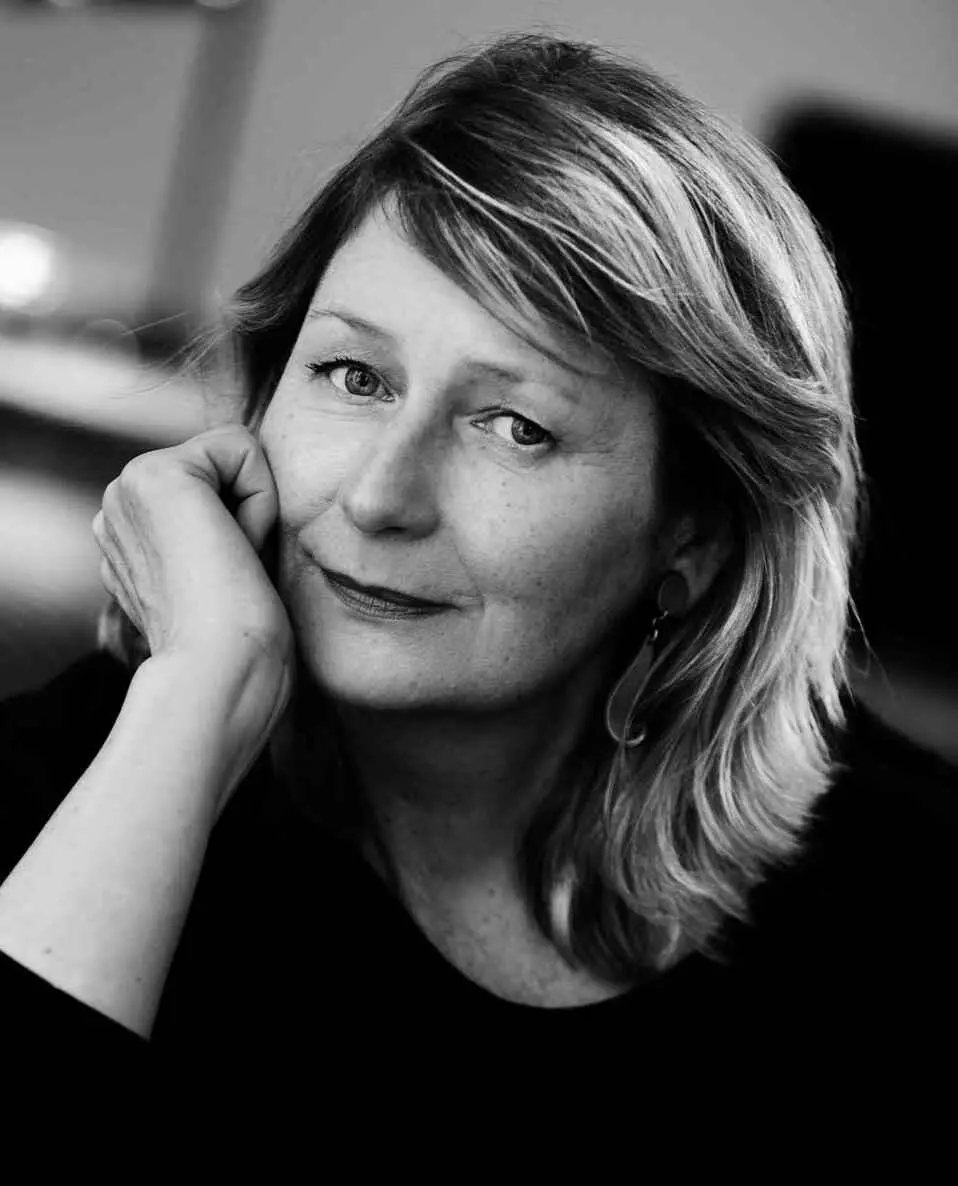A Folksy Shop by an Iceberg Lagoon:
Iceberg lagoon:This is Breiðamerkurlón, also known as Jökulsárlón, the large glacial lake on the border of Vatnajökull National Park in southeast Iceland. It is a very popular tourist destination.
Brennivín:An Icelandic schnapps flavored with caraway. Also known as “Black Death,” it is considered Iceland’s signature alcoholic drink.
Leise flehen: A reference to Franz Schubert’s (1797–1828) Ständchen (Serenade), with the lyrics “Leise flehen meine Lieder / Durch die Nacht zu dir” (“Gently goes my song’s entreaty / through the night to you”) by lyricist Ludwig Rellstab (1799–1860).
Buried Child: A play by the American playwright, actor, and director Sam Shepard (1943–). First performed in 1978, it deals with the disintegration of the American family.
“There sits my mother”:Lines from the nursery rhyme “Tunglið, tunglið taktu mig” (“Moon, moon, take me”), by the Icelandic poet Théodóra Thorodssen (1863–1954).
“A mishap! I am not to blame”:From the poem “Illur lækur eða Heimasetan” (“Evil Brook, or, Staying at Home”) by the renowned Icelandic romantic poet Jónas Hallgrímsson (1807–1845).
“Yet oh, María, I want to go home”:A line from the song “Ó, María mig langar heim” (“Oh, María, I want to go home”), an Icelandic version, with text by Ólafur Gaukur Þórhallsson (1930–2011), of the song “Mary, Don’t You Weep” by Mel Tillis (1932–) and Marijohn Wilkin (1920–2006).
Útheimar:
“Iceland Scored with Inlets”:The lyrics to this song (in Icelandic, “Ísland ögrum skorið”) were written by the explorer and writer Eggert Ólafsson (1726–1768), and the tune was composed by the composer and physician Sigvaldi Kaldalóns (1881–1946).
Helmsperson Þuríður:A reference to Þuríður Einarsdóttir (1777–1863), otherwise known as Þuríður formaður (helmsperson Þuríður), who lived in Eyrarbakki in southwest Iceland and was renowned for her prowess as a sailor as well as her investigative abilities, having helped to expose those responsible for the robbery known as “Kambsránið” (The Robbery at Kambur).
“I built a house by the sea”:From the poem “Hudson Bay” by the Icelandic poet Steinn Steinarr (1908–1958).
Guðmundur the Good:Guðmundur Arason (1161–1237), elected bishop of Hólar in 1203. In his travels around Iceland, he blessed springs and wells, some of which still bear his name today.
The Dwarf: A lied for voice and piano (in German, Der Zwerg ) composed by the Austrian composer Franz Schubert (1797–1828).
Dýrfinna’s House:
“Seldom have I refused the drippings”:An Icelandic idiom (“Sjaldan hef ég flotinu neitað”) meaning “I never refuse what I’m offered” or “I don’t bite the hand that feeds me.”
Salka Valka:A reference to characters in the novel Salka Valka , by the Nobel Prize — winning Icelandic author Halldór Laxness (1902–1998).
“Would you know yet more?”:A refrain (in Icelandic, “Vitið þér enn eða hvað”) in the Old Norse poem Völuspá ( Prophecy of the Seeress ), probably the most famous poem from the Poetic Edda , a collection of mythological and heroic poems preserved in the medieval Icelandic manuscript Codex Regius.
Prince Polo:A Polish chocolate bar, one of the first confections imported into Iceland and for decades probably Iceland’s biggest selling chocolate bar. It is still popular today, in the classic configuration “Coke and Prince.”
“Over Cold Desert Sands”:A popular song (in Icelandic, “Yfir kaldan eyðisand”); originally a verse by the Icelandic poet Kristján Jónsson fjallaskáld , poet of the mountains (1842–1869).
Sæmundur on the seal:A reference to Sæmundur Sigfússon, also known as Sæmundur fróði or Sæmundur the Learned (1056–1133), an Icelandic priest and scholar who became a popular folklore character. In folktales he often tricks the Devil into doing his bidding, as here, when he has the Devil in the form of a seal transport him back over the ocean to Iceland from France. Upon nearing the shore, Sæmundur brains the seal with a psalter. The scene is depicted on a sculpture by Ásmundur Sveinsson (see note for the chapter “Bollagata”), which stands in front of the main building of the University of Iceland.
Durch die Nacht zu dir: In English, “Through the night to you.” See the note for Leise flehen under A Folksy Shop by an Iceberg Lagoon.
The benevolent Sarastro:A character in the opera The Magic Flute (see note under The Corral at the Foot of Eyjafjöll). He defends and protects the main female character, Pamina, particularly from her mother, the Queen of the Night.

© David Ignaszewski / Koboy
Born in Reykjavík, Steinunn Sigurðardóttir studied philosophy and psychology at University College Dublin. She made a name for herself at the age of nineteen with a volume of poetry entitled Continuances ( Sifellur , 1969). Sigurðardóttir has since become one of Iceland’s most frequently translated writers, and one of the most lauded, having won the Icelandic Literature Prize (for Place of the Heart ) and the national Bookseller’s Prize in 2011, among many other nominations. Steinunn Sigurðardóttir’s extensive body of work includes eleven novels, seven volumes of poetry, two volumes of short stories, radio plays, television plays, and a children’s book. Her novel The Thief of Time ( Tímaþjófurinn , 1986) was adapted to film in France ( Voleur de vie , 1998), directed by Yves Angelo and starring Emmanuelle Béart and Sandrine Bonnaire. After an extensive and fruitful career abroad, most notably in Germany and France, Place of the Heart is Steinunn Sigurðardóttir’s English-language debut.













